Crossing the Indian Ocean

Peregrina's Journey
Peter and Margie Benziger
Mon 9 Dec 2013 05:03
28:47.43S
032:04.95E
CROSSING THE INDIAN OCEAN
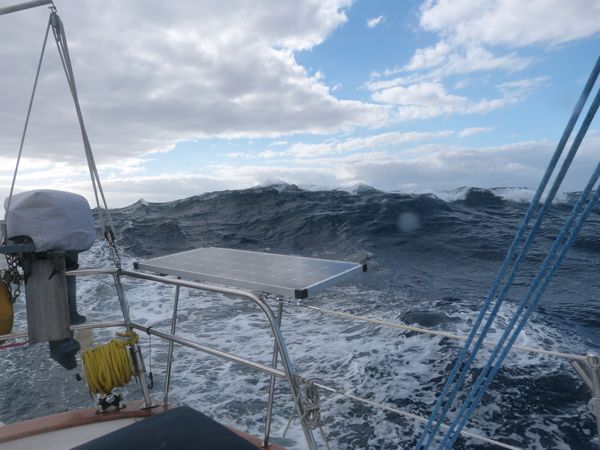
My intent now is to invite you aboard Peregrina for the crossing. Hopefully, by the end of my story you will have some idea of what it is like to sail with us.
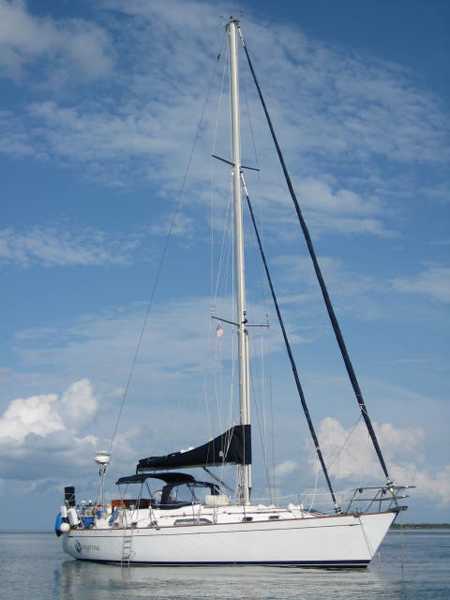
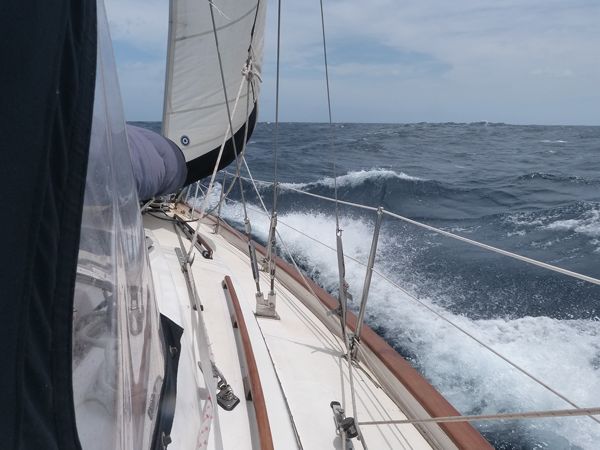
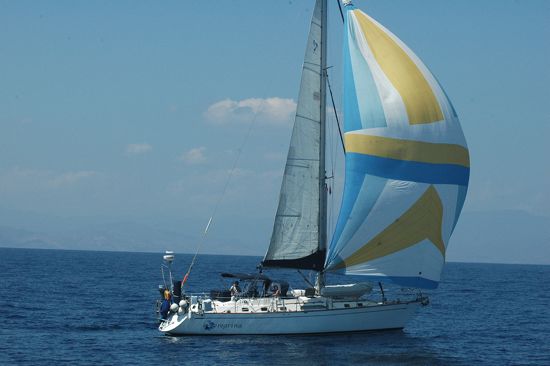
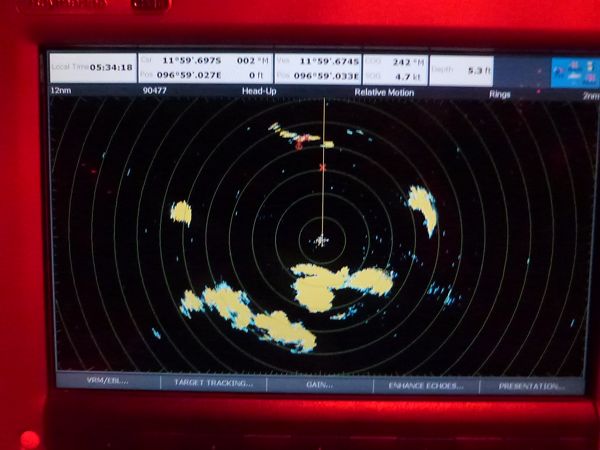
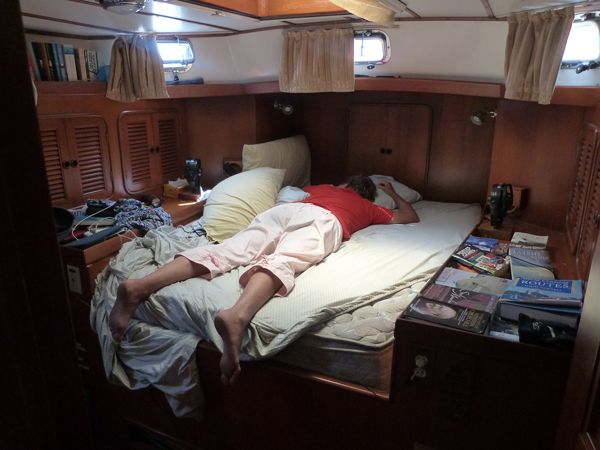 On part of this Indian Ocean passage we had our friends Bob
and Vicky Reynard join us. They were a big help. Just getting one less hour on watch made a big difference! I took the 7pm-11pm watch, Margie 11pm-2am, Vicky 2am-5am
and Bob 5am-8am.
On part of this Indian Ocean passage we had our friends Bob
and Vicky Reynard join us. They were a big help. Just getting one less hour on watch made a big difference! I took the 7pm-11pm watch, Margie 11pm-2am, Vicky 2am-5am
and Bob 5am-8am.
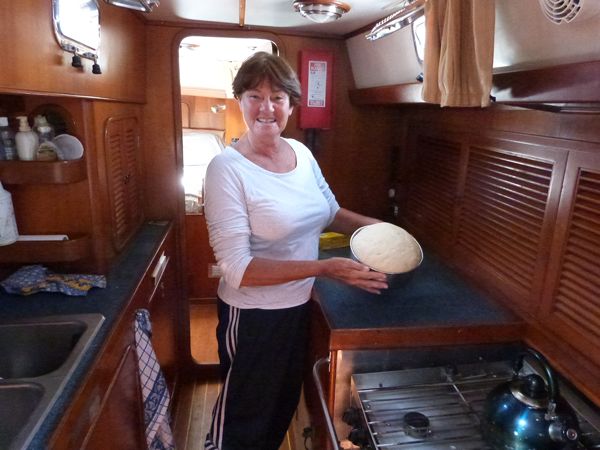
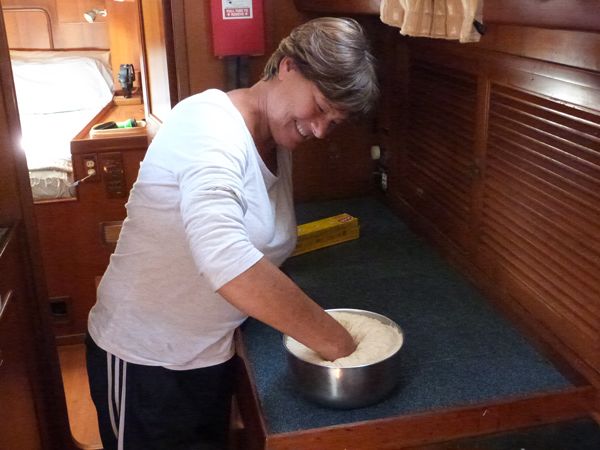
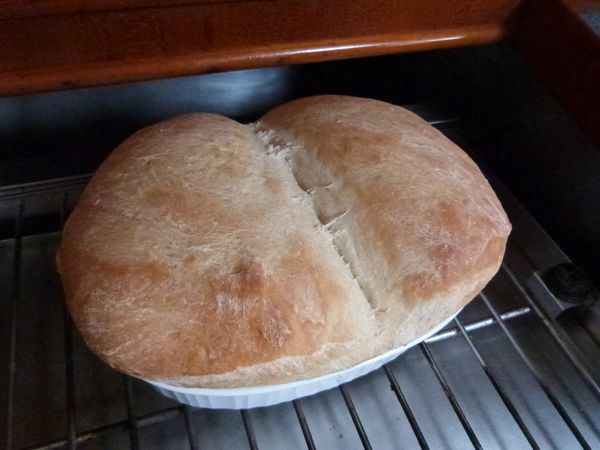
Our sails are up for weeks on end and lines get worn and have to be “end-for-ended” or replaced.
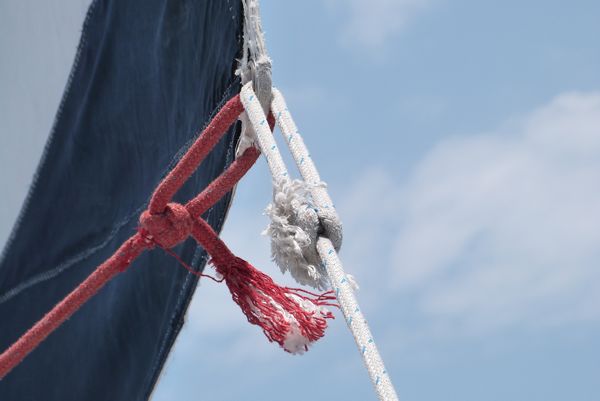
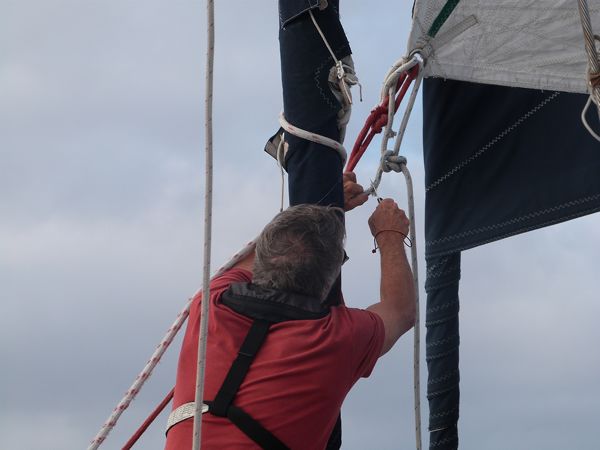
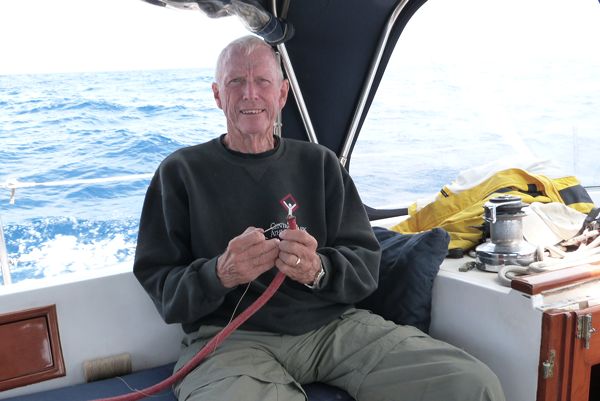
During every passage the wear and tear catches up with
tranquility. Since leaving Miami just
about everything on the boat has broken.
During this passage, the boom broke off the mast in “exhilarating” winds. If you are not sailors, please accept my point of view that having your boom break away from your mast while you are 800 miles from Africa in the middle of the Indian Ocean is not a good thing. The piece of hardware that broke is called the Gooseneck. In other words, one might say, “Our goose was cooked”.
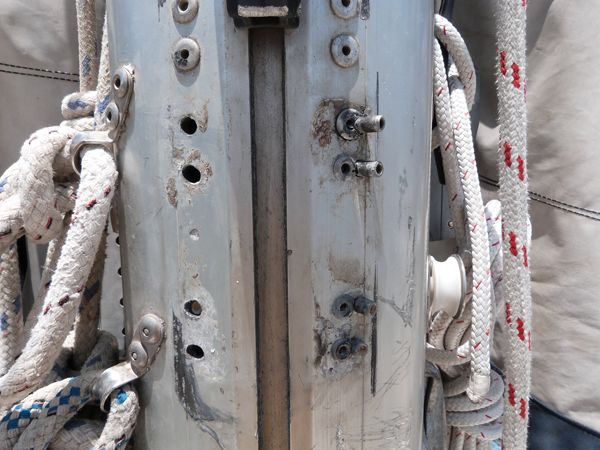
Luckily it happened
during daylight and I was able to lower the mainsail and strap the boom to the
mast. Please note the incredibly organized and highly technical pattern of
strapping.
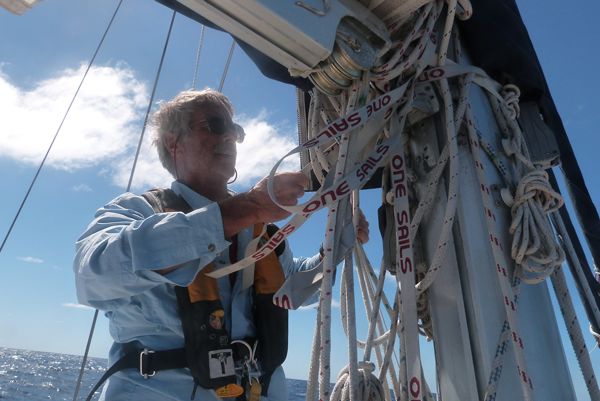
We sailed the the last 800 miles under poled out genoa with no mainsail.
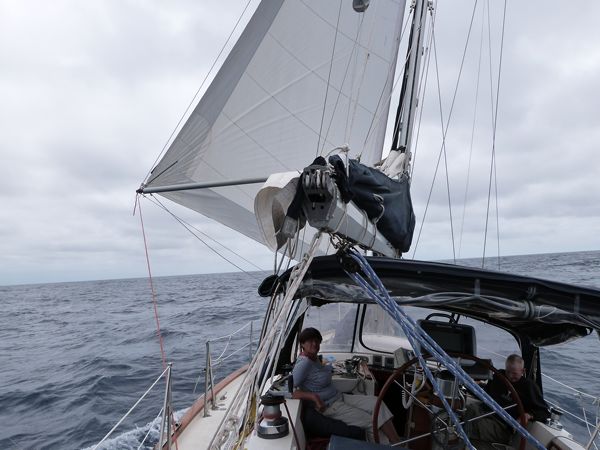
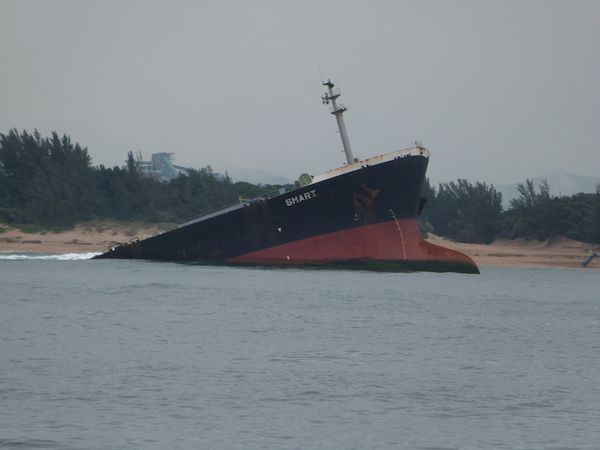
We made it!
Our beloved ship, Peregrina, has carried us safely 5000
miles from Singapore to Richards Bay, South Africa. During the passage, we
crossed the Indian Ocean which is reputed to have, at times, the worst sailing
conditions in a circumnavigation. Here is view aft on port side. Notice the waves breaking on top of the swell on the right side of the photo.

My intent now is to invite you aboard Peregrina for the crossing. Hopefully, by the end of my story you will have some idea of what it is like to sail with us.
Since you are coming aboard now, as crew, perhaps you would
like to know a bit more about Peregrina.

She was built in 1990 in Taiwan. As a Tayana 47, she measures 47 feel overall
but she measures less on the waterline since the bow gracefully overhangs the
water. She displaces about 22 tons, has a mast about 64 feet above the water
and is a cutter rig.
A cutter rig has one mainsail, a large genoa sail all the
way forward and a smaller stay-sail in-between the foresail and the mainsail.
Thus, we have three sails available for easy use. The reason that a cutter rig is a good off-shore
cruising configuration is that, when the weather gets bad, we can “reef down” the
big mainsail making it smaller and use the small stay-sail just in front of the
mast.This is the smaller stay-sail.

We also carry an asymmetrical spinnaker which we sometimes
use in light winds. This requires us to lift the very heavy spinnaker bag onto
the deck and to spend about a half hour getting the sail ready.

Peregrina is powered by a Yanmar 115 hp diesel (named
Hercules), has a Fischer Panda generator, a water maker, an autopilot and lots of electronic
gear for navigation. We carry a battery
bank that can be recharged by our generator, the main engine, two solar panels or our wind generator.
Before all passages, we begin studying the grib files which
are graphic weather maps. We get our grib files over the SSB radio ( Single Sideband Radio which uses the entire 60+ feet of Peregrina's metal backstay as an antennae. These maps provide forecasts of wind, waves and
rain. During our crossing of the Indian
Ocean we also paid for two professional weather forecasts from Commanders
Weather.
During passage, we watch for weather changes during the day
and use the radar at night to watch for the yellow clouds which indicate
precipitation.

On passage we had many days with winds over 40 knots (1 knot
– 1.15 mph).
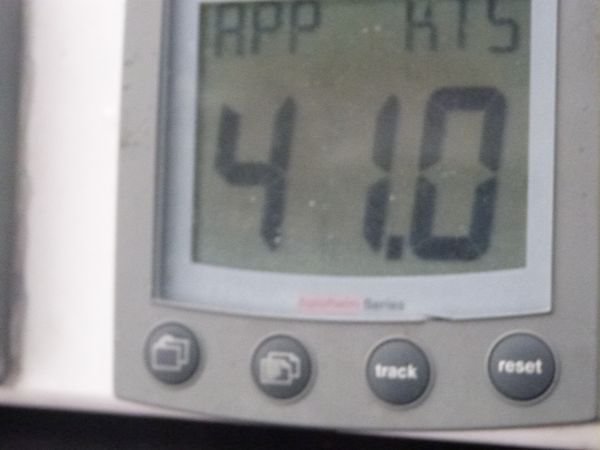
The highest wind recorded was at night, about 2am, with 54
knots of wind while we approached Cocos Keeling. The seas were frankly “monstrous.”

The picture below shows a “front” which blew though with
very high winds. Fronts are very powerful and we usually reef down early. This one hit us like a sledge hammer.
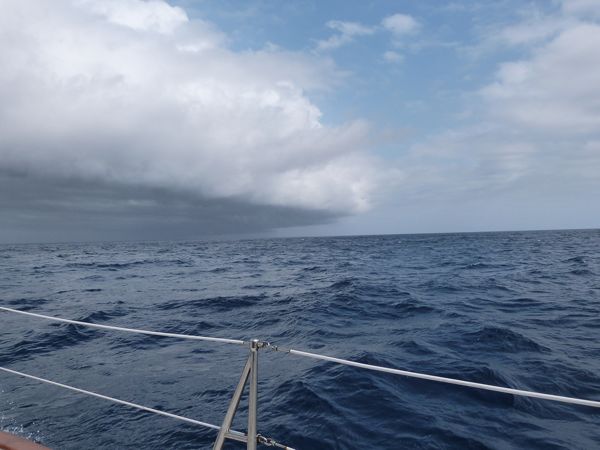
Once we depart on any passage, Peregrina, operates 24 hours
a day. Margie and I have used four hour night
watches for the last four years. I am on
watch from 10pm-2pm and Margie is on from 2pm-6pm. The rest of the time we let
the other person sleep when needed. 

At night, the normal fashion statement is foul weather gear
and a PDF (personal flotation device).
We also have a whistle and usually a headlamp on.
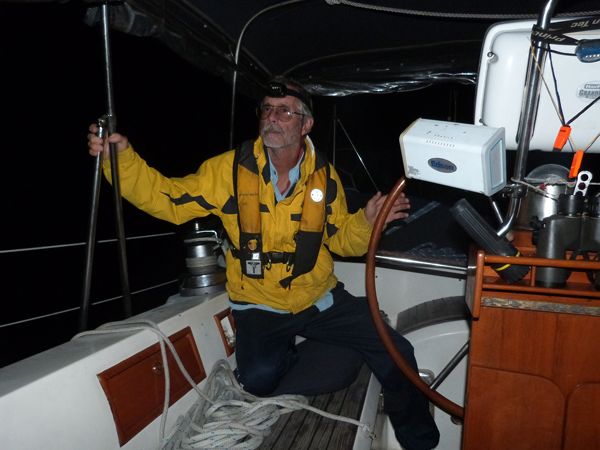

Food is prepared in the galley by Margie since this is what we call a “Pink”
job. "Blue" jobs include backed up toilets so any time Margie wants to switch, I'm all for it! But, I have to admit that, often, cooking is not fun as there is no secure
place to put plates, glasses, mixing bowls etc. and everything flies all over the place - including the cook! Luckily, our stove is gimbaled which
means it moves with the boat. So once the pan gets on the burner it generally
stays there. This is not true for food
placed on the counter or table, so we have a rule that anything that has spent less than 30 seconds on the floor will be eaten.
During this trip, Margie made bread for the first time. Vicky gave her private lessons and she was a good student. She likes this because
she gets to punch the dough and pretend it is her Captain.



Life on board for the 5000 miles is a combination of
relaxing read books
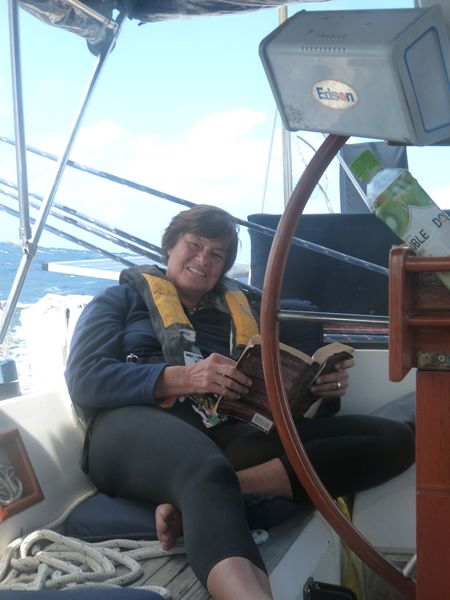 and lots of work. The work is
constant. Since Peregrina is being sailed hard 24 hours a day, day after day,
the maintenance is critical. Here is a picture of me replacing a halyard which
was chaffed through. It is important to move constantly around the boat and look
for potential problems.
and lots of work. The work is
constant. Since Peregrina is being sailed hard 24 hours a day, day after day,
the maintenance is critical. Here is a picture of me replacing a halyard which
was chaffed through. It is important to move constantly around the boat and look
for potential problems.

Our sails are up for weeks on end and lines get worn and have to be “end-for-ended” or replaced.


Here is Bob whipping a line end.

During this passage, the boom broke off the mast in “exhilarating” winds. If you are not sailors, please accept my point of view that having your boom break away from your mast while you are 800 miles from Africa in the middle of the Indian Ocean is not a good thing. The piece of hardware that broke is called the Gooseneck. In other words, one might say, “Our goose was cooked”.



While I was trying to wrestle the boom and get it lashed in place, I managed to get my hand caught between the broken boom and the mast
which just about removed my left middle finger. This was great since I
had jammed that same finger into a winch two days earlier so that it was already
black and blue and almost a candidate for amputation.
This brings us to health on board. The first part of a
passage everyone usually spends part of a day feeling really queasy (sea
sickness). The rest of the passage is a
waiting game to see who bleeds next from a cut, scrape or slice.
Now I want to state unequivocally that I do not beat my wife….all her bruises are natural. We actually get them often at the same time. Here is a picture of both our feet together. I have smashed both my toes turning them blue. She has one toe that was hurt from a can of corn falling on it and the other was from jamming her toe into a jib car on deck. Pretty ugly aren't they? Probably more information than you needed...
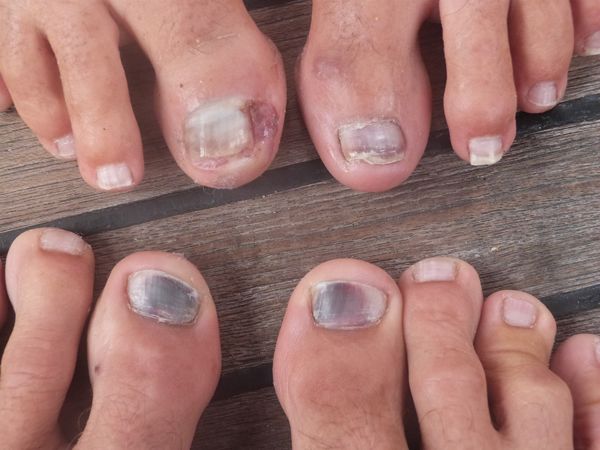
Despite all our trials and tribulations, we finally arrived at Richards Bay to be greeted with a view
of the bow section of this freighter.
Now I want to state unequivocally that I do not beat my wife….all her bruises are natural. We actually get them often at the same time. Here is a picture of both our feet together. I have smashed both my toes turning them blue. She has one toe that was hurt from a can of corn falling on it and the other was from jamming her toe into a jib car on deck. Pretty ugly aren't they? Probably more information than you needed...


She had tried to leave a couple of weeks before we arrived in one of the
famous “busters” which are high winds and seas that come roaring onshore from the Indian
Ocean. As she transited the channel, entering the Indian Ocean, she
was lifted high in 13 meter seas and then fell in the trough to break her back
on the bottom. If you look closely you will see the name of this vessel is "Smart." I wonder if the person who named her “Smart” has regretted his
decision?
Anyway, Peregrina,
did make the 5000 mile passage in good shape - all things considered and we're looking forward to our next leg of the journey down the coast of South Africa to Cape Town.
Thanks for joining us on our passage today.
Thanks for joining us on our passage today.